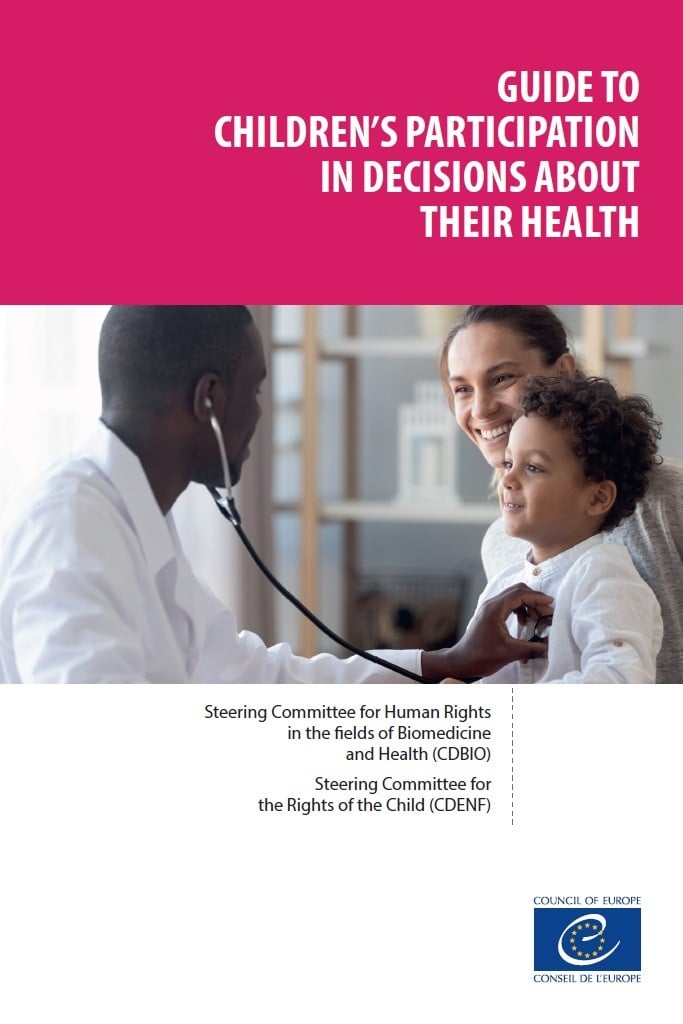This Guide provides information and advice, primarily for healthcare professionals, about how to involve children in decision-making processes regarding their health. It starts by presenting the theoretical and legal context and progresses to describe important components of the decision-making process, helping health professionals to understand their role in supporting children, families, and other professionals to enact this in practice. Key concepts of consent, assent, and ‘best interests’ are discussed, as well as common healthcare situations where participation in decision-making may sometimes be perceived as more challenging. Examples and links to good practice are provided throughout.
ABSTRACT
ACKNOWLEDGEMENTS
INTRODUCTION
SCOPE AND AIM OF THE GUIDE
LEGAL AND CONCEPTUAL FRAMEWORKS FOR CHILDREN’S PARTICIPATION IN DECISIONS ABOUT THEIR HEALTH
MAIN PROVISIONS OF INTERNATIONAL LAW
DOMESTIC LAW(S) IN COUNCIL OF EUROPE MEMBER STATES
WHAT IS MEANINGFUL PARTICIPATION?
SUPPORTING CHILDREN’S PARTICIPATION IN DECISIONS ABOUT THEIR HEALTH
KEY STAKEHOLDERS IN THE DECISION-MAKING PROCESS: THE ROLES OF CHILDREN, PARENTS, AND HEALTH PROFESSIONALS
ACTIONS FOR MEANINGFUL CHILD PARTICIPATION
Providing appropriate information
Helping children express their views
Considering children’s opinions
REACHING A DECISION
Determining children’s best interests
Consent, assent and dissent
Managing disagreements and conflicts
CHILDREN’S PARTICIPATION FOR BETTER HEALTHCARE
CONCLUSION




